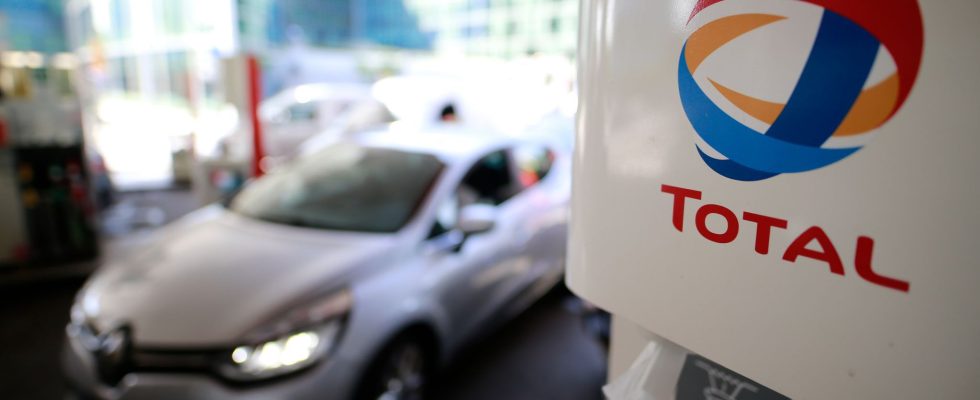The government wanted to make a gesture for motorists. Without it costing him an arm. Faced with persistent inflation, the government pulled out the card of selling fuel at a loss from “the beginning of December”, but had to commit, Monday September 18, to granting “compensation” to independent service stations who were worried.
Fuel prices in France have risen regularly this summer. At the beginning of September on average, SP95-E10 sold at 1.9359 euros per liter (+0.9 cents compared to the previous week), diesel at 1.88 euros (+2.3 cents) and SP- 98 to 2 euros (stable): prices which had not been so high since April for gasoline and February for diesel, according to statistics from the Ministry of Ecological Transition.
But what about our European neighbors? The trend is there: the price of gasoline is increasing and motorists on the old continent are seeing these prices increase their expenses. In all euro zone countries, a liter of unleaded has increased by twenty cents on average since the start of the year, going from 1.71 euros to 1.9 euros. Ditto for the price of diesel which increased from 1.77 euros to 1.80 euros, according to weekly data from the European Commission.
However, the French are among those who pay the most for their liter of gasoline but… they are not the most to be pitied. It is in Iceland that a liter of unleaded 95 gasoline is sold at a high price, on average 2.20 euros per liter. In second and third place are the Netherlands (2.11) and Denmark (2.07), followed by the Nordic countries, Greece and Italy. Note that the price of gasoline is skyrocketing in rich countries, while others (some of which produce oil) offer lower prices.
This is the case, for example, in Malta or Moldova, where motorists spend 1.35 and 1.37 euros per liter respectively. Another state where prices defy all competition, Bulgaria, where gasoline is 1.4 euros per liter.
France, bad student on the price of diesel
In the soft underbelly of the ranking, we find Germany (1.89 euros per liter), Belgium (1.86) and Luxembourg (1.64). French consumers also pay more than their Spanish (1.87) and Portuguese (1.74) neighbors. What about diesel? Prices are still soaring when compared to other European countries. Only the Scandinavian countries, Italy, Belgium and obviously Iceland have higher prices. The Germans pay 1.80 euros per liter for their diesel, while the Poles pay 1.39 euros for their diesel.
So, how can we explain these disparities from one state to another? First of all, we must understand how the price of gasoline breaks down: price of the crude barrel, refining margin and distribution margin. Added to this are taxes. Certain parameters depend on international policy such as the refining margin – difference between the market value of refined products resulting from the industrial refining process and the purchase price of crude oil – which has increased. “Refining margins have increased by 35% in recent months, again for reasons of supply and demand,” noted Philippe Charlez, energy expert for the Sapiens Institute in Le Figaro.
Another essential factor: the price of the barrel, which is not decided in France. While demand is once again high – driven by China – supply is tending to reduce. A strategy attributable to the members of the Organization of the Petroleum Exporting Countries (OPEC) – representing around 40% of crude production in the world – who wish to keep prices relatively high. Thus, the price of a barrel and the refining margin have caused gasoline prices to soar within Europe.
Abundant taxes in France
Among the parameters that differ from one country to another are distribution margins. These had increased at the start of the year, but they have been falling for several months. In August, they were set at 20 cents per liter, compared to 27 last April, according to the national association for the defense of consumers and users. According to experts, they are not responsible for the rise in gasoline prices.
Finally, there are taxes, a way for States to influence the price of fuel at the pump on their territory. In France, they weigh heavily, up to 52% of the total price of a liter of SP95 gasoline. There are three fuel taxes – TICPE, VAT and VAT on TICPE. The objective is to dissuade the population from taking their cars and to encourage motorists to change their habits. In other words, encourage motorists to choose less fuel-efficient and, above all, less polluting vehicles. The share of taxes is also significant among our Italian, Greek and even German neighbors. Unsurprisingly, the countries with the lowest prices at the pump are those where taxes are the lowest (Romania, Bulgaria, Hungary, etc.) Hence the possibility of seeing a correlation link.
